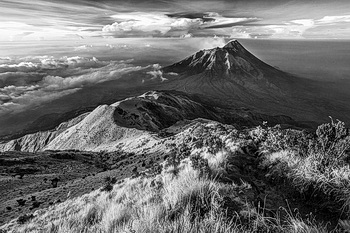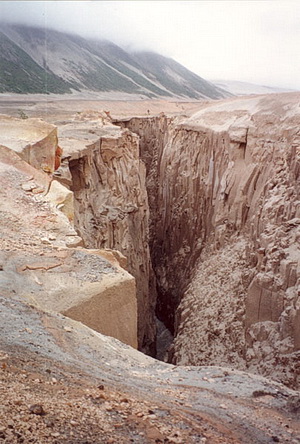
It happened on June 6th, 1912!
The Novarupta-Katmai volcanic eruption in Alaska in 1912 became one of the most powerful eruptions of the 20th century. Even 109 years later, its status as one of the largest volcanic eruptions still remains.
In this post, we look at how it happened and the possibility that history might repeat itself again.
The Eruption
On the morning of June 6th, 1912, Alaska residents were getting ready to start their upcoming fishing season. Back then, the population in the Alaska Peninsula was much lower than it is today. However, a few things never change, and earthquakes in the region are one of them. Even at that time, earthquakes were common in Alaska because of the region’s geological instability.
As people were used to living in the region, over time, they realized that the earthquakes were not only getting more frequent but also stronger. Because of the frequency and intensity of these quakes, the two remaining families in the village left their homes for a safer place.
And that’s when it happened. Around midday on June 6th, the skies over Katmai darkened and what happened next continued for the next 60 hours. The area didn’t see the sun during all these hours of a continuous volcanic eruption.
Throughout the 60 hours of the constant eruption, the volcano spewed out around 6.7m3 of ash particles around 20 miles into the stratosphere (which extends around 30 miles above the earth’s surface). The ash-covered an area of around 3000 sq. miles, and the ash fell in amounts up to a foot that changed a nearby vast green valley into a wilderness known as the Valley of Ten Thousand Smokes.
Impact of the Eruption
The region’s inhabitants were among the first people to experience the direct impact of the eruption. It was so loud that the blast was heard around 750 miles away. Moreover, the impact was not limited to sound. It had a major visual impact as residents witnessed a thick cloud of ashes that quickly rose towards the sky.
Within the first few hours, this thick layer of ash began falling from the sky onto the nearby town of Kodiak. As the eruption continued for the next three days, the ashes covered the town up to one foot deep. As a result, the region’s inhabitants were forced to take shelter indoors as the outdoor environment was suffocating, making it difficult to breathe. The damage further continued as some of the buildings collapsed due to the heavyweight of the volcanic dust.
The impact was not limited to that region either. Within the next few days, the ash cloud traveled over western Canada and to several western U.S. states. By June 17th, the cloud was found in Algeria and then continued to spread to other regions, including China and India. While there were no deaths reported from the eruption, there was a lot of indirect impact in terms of loss to plants, animals, marine life, and agriculture, which continued for several years.
The Formation of Valley of Ten Thousand Smokes

Following the eruption, the National Geographic Society started sending expeditions to Alaska to investigate the damage.
During one such expedition in 1916, a few researchers traveled inland to the eruption area and found out that the valley of Knife Creek was completely barren.
Moreover, the ash was still hot, and thousands of jets of steam could be seen from the ground. Inspired by this observation, the valley was known as the “Valley of 10,000 Smokes”.
The Resulting Katmai Caldera and Novarupta Dome
During the initial observations, the Katmai Caldera volcano was originally thought to be a source of the eruption. However, it was a long time after the incident that researchers identified the original source as the Novarupta volcano.
Can History Repeat Itself?
Novarupta is now silent and has been for quite some time. The last eruption reported from this volcano was the one in 1912 however, if you look at the history of Novarupta, it has erupted at least seven times in the last 4,000 years. Moreover, since the Alaska Peninsula is located on an active convergent boundary, we can expect future volcanic eruptions. Furthermore, given the location of Novarupta, it is likely that future volcanic eruptions will have a severe local and global impact, similar to what happened to Pompeii in 79 AD from the Mount Vesuvius volcano.
The local impact of potential volcanic activity anywhere can lead to a significant loss of life. Due to the potential impact of volcanic activity in this area of Alaska, the United States Geological Survey and others are closely monitoring these volcanoes.
Furthermore, the impact of any future eruptions can have a devastating effect on the global climate. Studies indicate that a volcanic blast of this magnitude can modify the global surface temperature patterns and rainfall levels in several parts of the world.
Another possible reason to monitor these volcanoes is the danger of any future eruption on commercial air traffic. Jet engines experience enormous air pressure, and flying through the air containing fine ash particles can have a similar effect as sandblasting, which can cause extensive damage to the aircraft. Therefore, it is estimated that any future eruptions from Novarupta halt commercial air traffic across North America.
What Can We Do About It?
Unfortunately, eruptions like Novarupta are one of the natural disasters that we cannot prevent. However, the most we can do to control the situation is to assess the potential impact and develop a plan of action to minimize losses. With a history to look back to, there is a lot that we can learn from the eruption of 1912 and improve our chances of minimizing damage, injury, and death.

